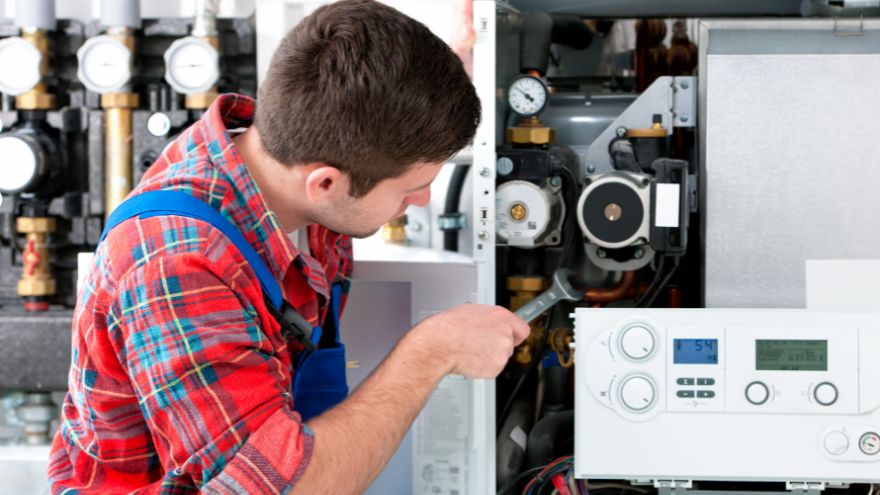Installing a heating system in a facility requires a special installation. Classic radiators, but also the increasingly popular underfloor heating, ensure thermal comfort. But is it possible to use radiators and underfloor heating at the same time? Of course, it is necessary to install a pump group. What exactly is it and when is it used?

Check pump groups at the Onninen wholesaler
What is a pump group?
The term pump group is used to describe a special structure, a set of cooperating elements that enable the simultaneous use of two heat sources or two heat receivers. It should be noted that such a system is characterized by a large temperature difference. In radiators it reaches up to 80 degrees, and in the case of underfloor heating it is almost twice as low, only about 45 degrees. This situation makes it necessary to use appropriate elements that allow for the safe installation of both solutions.
In such a system, the pump group plays a dual role. On the one hand, it allows you to mix such different temperatures and separates them appropriately, on the other hand, it functions as a safety valve, preventing the water from the central heating from returning if its temperature is too low or too high. Thanks to this, it is often possible to avoid a failure of the heating boiler.
The use of pump groups is quite wide. Apart from the fact that it allows you to connect various heat receivers within one installation, it also allows you to connect two power sources for the installation. This is an ideal solution when you use solid fuel and gas heating in one facility. Significant temperature differences are also observed here, which could lead to damage to the installation components. The pump eliminates the risk.
The pump group is a solution that allows you to control a heating installation with more than one circuit.
When are pump groups used?
Pump groups are used in two situations. When one heating source is installed in the facility, but it must supply two different types of receivers that are part of different circuits, or when there are two sources supplying heat to one circuit and they are intended to power one type of receiver.
Depending on the specificity of the installation, two variants of pump groups are used. The first one is mounted centrally. Its task is to control the power supply of the entire riser. It is usually located in the immediate vicinity of the heating boiler. This is a solution whose dimensions are quite large, which requires organizing space in the boiler room.
The second variant are pump groups installed at the distributor. The role of the group at the distributor is limited to one floor. The size is also a big advantage, because the dimensions are much smaller than the central groups. Additionally, these are ready-to-install kits, which allows you to avoid serious interference in the installation. However, you need to be careful because they are available in various configurations, so you must carefully match the type to the installation needs.
Central pump groups are most often used in new buildings, and their installation is planned already at the building design stage. In turn, in existing facilities, pump groups at the distributor will be perfect because they can be easily adapted to the existing installation variant.
The pump group is used both in residential buildings, single-family houses, and in commercial facilities. The condition for proper and effective operation is to properly match the variant to the needs and performance of a given installation.
What does a pump group consist of?
The pump group is a complex mechanism that works properly thanks to the combination of several elements, such as: circulation pump, ball valves with thermometers and cut-off valves, insulation and mixer. Each element plays a specific role. The task of ball valves is to control the temperature of the heating medium. If it does not have the appropriate temperature, the valve cuts off the flow to subsequent elements of the installation.
Thanks to the shut-off valves, it is possible to easily cut off the heating medium, which is extremely important when servicing pump groups. The valves cut off the water supply to the group, so its service and repair do not require removing all water from the system. In turn, the insulation is responsible for maintaining the appropriate temperature of the pump group, which ensures its proper operation. The advantage of insulation is that it allows the operating system to be slightly quieter.
The mixer, as its name suggests, is designed to mix hot and cold water to maintain its optimal temperature for the operation of the group.